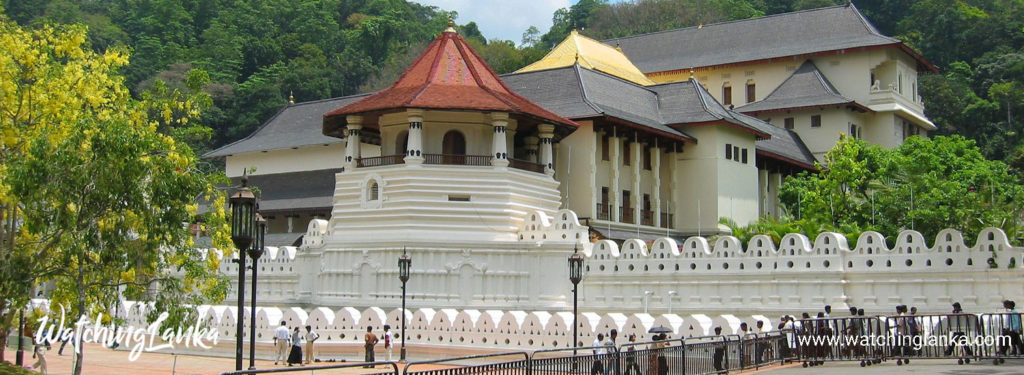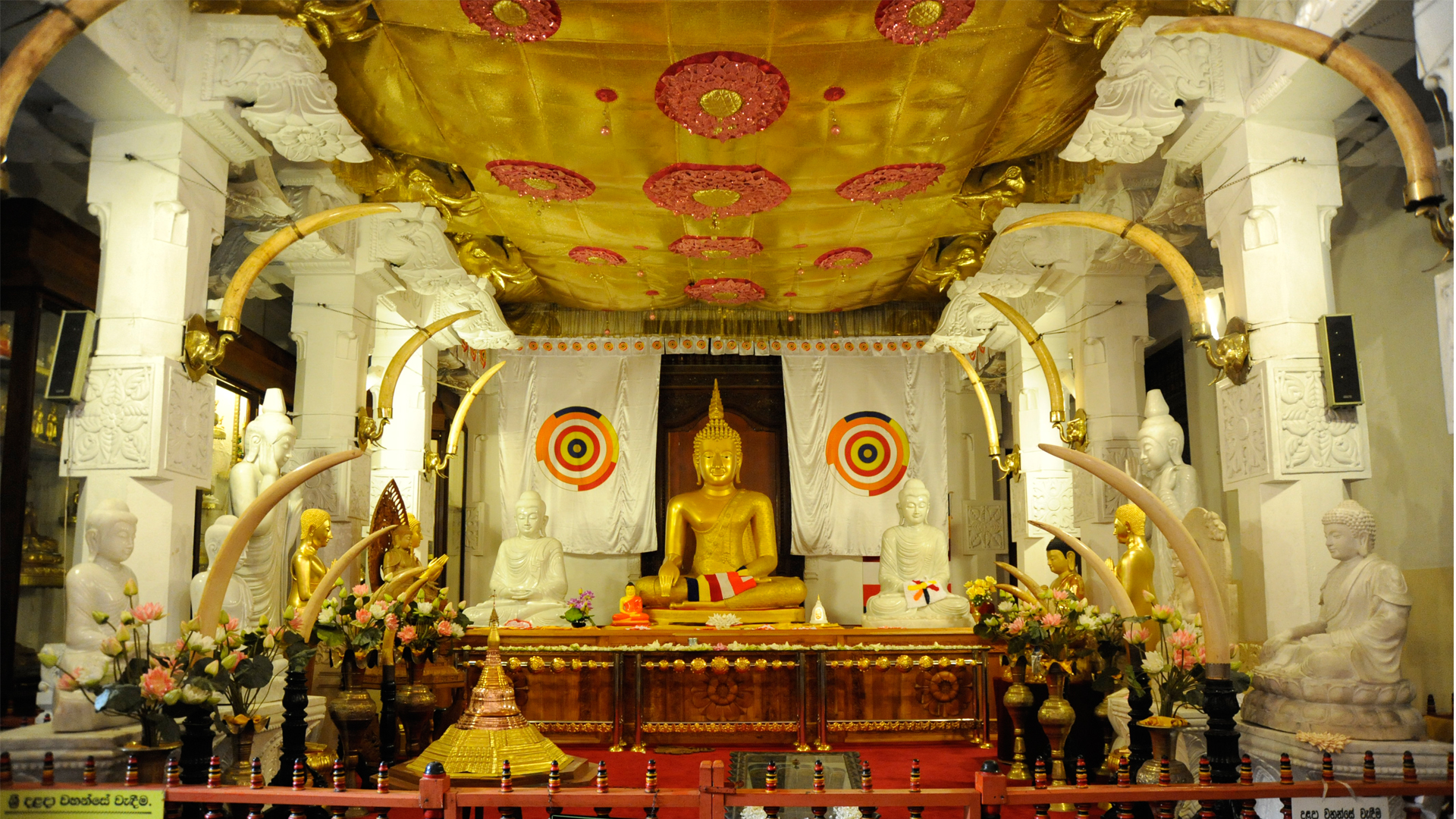Sri Dalada Maligawa or the Temple of the Sacred Tooth Relic is a Buddhist temple in the city of Kandy, Sri Lanka. It is located in the royal palace complex of the former Kingdom of Kandy, which houses the relic of the tooth of the Buddha. Since ancient times, the relic has played an important role in local politics because it is believed that whoever holds the relic holds the governance of the country. Kandy was the last capital of the Sri Lankan kings and is a World Heritage Site mainly due to the temple. Bhikkhus of the two chapters of Malwatte and Asgiriya conduct daily worship in the inner chamber of the temple. Rituals are performed three times daily: at dawn, at noon and in the evenings. On Wednesdays, there is a symbolic bathing of the relic with a herbal preparation made from scented water and fragrant flowers called Nanumura Mangallaya. This holy water is believed to contain healing powers and is distributed among those present. The temple sustained damage from bombings by Janatha Vimukthi Peramuna in 1989 and by Liberation Tigers of Tamil Eelam in 1998 but was fully restored each time.
The tooth relic is received by the then King Meghavanna in Anuradhapura and enshrined in a 3rd century holy edifice. The tooth relic became a symbol of status denoting the right to ascend the throne, and later kings in the kingdoms of Anuradhapura, Polonnaruwa and Dambadeniya built temples for the relic close to the royal residences.
In the era of the Kotte Kingdom, the temple of the tooth was situated in the toyal city – Sri Jayawardenapura Kotte. With the rise of the Kingdom of Kandy the Tooth of Lord Buddha was brought to the city, where it was housed in a two story building by the King Vimaladharmasuriya I. The building did not survive the ravages of time.
The tooth relic was taken into hiding during the Portugese Invasion in 1603. It was brought back to Kandy by King Rajasingha II almost half a century later, and rehoused in a building identical to the former building.The current temple of the tooth was built by King Vira Parakrama Narendra Singha in the early 1700s. There was further construction on the moat and octagonal structure by the later King Sri Wickrama Rajasingha.The Temple of the Tooth suffered damage and had to be repaired due to various civil wars in the late 20th century.
HISTORY
The Sacred Tooth of Lord Gautama Buddha is preserved in Kalinga, India.The Kalinga king Guhasiva in the 4th century AD sends the tooth relic to Sri Lanka with Prince Danta and Princess Hemamala in order to prevent its possession by his enemies who made war.The tooth relic is received by the then King Meghavanna in Anuradhapura and enshrined in a 3rd century holy edifice. The tooth relic became a symbol of status denoting the right to ascend the throne, and later kings in the kingdoms of Anuradhapura, Polonnaruwa and Dambadeniya built temples for the relic close to the royal residences.
In the era of the Kotte Kingdom, the temple of the tooth was situated in the toyal city – Sri Jayawardenapura Kotte. With the rise of the Kingdom of Kandy the Tooth of Lord Buddha was brought to the city, where it was housed in a two story building by the King Vimaladharmasuriya I. The building did not survive the ravages of time.
The tooth relic was taken into hiding during the Portugese Invasion in 1603. It was brought back to Kandy by King Rajasingha II almost half a century later, and rehoused in a building identical to the former building.The current temple of the tooth was built by King Vira Parakrama Narendra Singha in the early 1700s. There was further construction on the moat and octagonal structure by the later King Sri Wickrama Rajasingha.The Temple of the Tooth suffered damage and had to be repaired due to various civil wars in the late 20th century.
The Architecture
- Temple of the Tooth building complex.
- The Main Entrance.
- Moat.
- The Octagon – Pattripuwa.
- Handun kunama.
- The Golden Canopy.
- The Temple of the Tooth Museum – New Palace.
- The Royal Palace.
- The National Museum of Kandy.
- International Buddhist Museum – Old Courts.
- Kandy Lake.
- Queens Bath.
- Diyathilaka mandapaya.
For More details visit :-https://lakpura.com/temple-of-the-tooth-relic or https://www.google.com/travel/things-to-do/see-all?
[Temple of the tooth relic. Text by
https://sunshinelanka.blogspot.com/, https://lakpura.com, https://www.google.com/travel/things-to-do/see-all? and Images by Google, copyright(s)
reserved by
original authors.]









Comments
Post a Comment